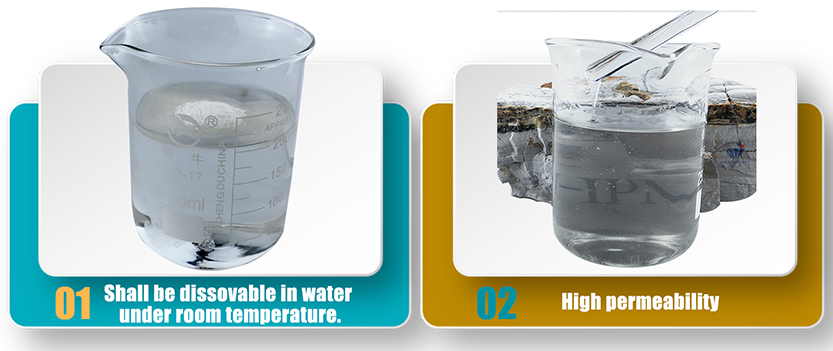
Dec . 05, 2024 04:54 Back to list
Exploring Applications and Properties of Hydroxyethyl Cellulose CAS Number
Hydroxyethyl Cellulose (HEC) Properties, Applications, and Market Trends
Hydroxyethyl cellulose (HEC) is a non-ionic, water-soluble polymer derived from cellulose, one of the most abundant biopolymers on Earth. The chemical formula of HEC is often represented as C2H6O3, reflecting the modifications made to cellulose by the substitution of hydroxyethyl groups. Its CAS Number is 9004-62-0, which identifies it uniquely in chemical databases. HEC is prized for its versatility and usefulness in various industries, making it a critical component in a range of applications.
Properties of Hydroxyethyl Cellulose
One of the most noteworthy properties of HEC is its ability to form clear, viscous solutions in water. This characteristic is utilized for its thickening and gelling properties, which are essential in various formulations. HEC is known for its excellent stability and performance across a wide range of pH levels and temperatures, making it suitable for applications in both acidic and alkaline environments.
Moreover, HEC has outstanding film-forming capabilities and can create protective layers for surfaces. Its non-toxic nature and biodegradable properties also contribute to its popularity as an ingredient in sustainable products. HEC is characterized by its low irritation potential, which makes it safe for use in personal care products and cosmetics.
Applications of Hydroxyethyl Cellulose
HEC finds applications in numerous fields, including pharmaceuticals, cosmetics, personal care products, and industrial uses.
1. Pharmaceuticals In the pharmaceutical industry, HEC serves as a binding agent in tablets and as a stabilizer in liquid formulations. Its thickening properties help to ensure uniform viscosity in syrups and suspensions, improving their overall efficacy and patient compliance.
2. Cosmetics and Personal Care The beauty industry utilizes HEC for its thickening and emulsification properties in creams, lotions, gels, and shampoos. By enhancing texture and stability, it helps to deliver consistent product performance.
hydroxyethyl cellulose cas no

3. Construction HEC is used in construction materials, particularly in cement-based products. It improves the workability of mortar and plaster and enhances water retention, ensuring better adhesion and durability of the applied materials.
4. Food Industry In food applications, HEC acts as a thickener and stabilizer, providing texture and consistency to various products such as sauces and dressings.
5. Coatings and Adhesives HEC is also employed in the manufacturing of coatings, paints, and adhesives due to its film-forming ability, which ensures a uniform application and increases the durability of the final product.
Market Trends and Future Outlook
The global hydroxyethyl cellulose market has witnessed steady growth over the past few years, driven by its expanding applications in different sectors. Key market drivers include the increasing demand for eco-friendly and bio-based materials, the growth of the cosmetics industry, and the rising use of HEC in pharmaceutical formulations.
North America and Europe dominate the hydroxyethyl cellulose market, attributable to high production capacities and the presence of established industries. However, emerging markets in Asia-Pacific are expected to present significant growth opportunities, driven by the rising demand for personal care products and construction materials in countries like China and India.
As sustainability becomes an increasingly important focus across industries, the demand for bio-based and environmentally friendly materials like HEC is expected to rise. Companies are likely to invest in innovative product development and collaborations to enhance their product offerings. Furthermore, advancements in biotechnology may lead to more efficient and sustainable production methods for HEC, ensuring its continued relevance in various applications.
Conclusion
Hydroxyethyl cellulose (HEC) is more than just a thickening agent; it is a versatile polymer with a wide range of applications across various industries. With its desirable properties and growing market demand, HEC is poised for continued growth and innovation. Its ability to adapt to consumer needs while maintaining environmental consciousness will likely make it a staple ingredient well into the future, contributing to advancements in sustainability and performance in multiple sectors.
-
Versatile Hpmc Uses in Different Industries
NewsJun.19,2025
-
Redispersible Powder's Role in Enhancing Durability of Construction Products
NewsJun.19,2025
-
Hydroxyethyl Cellulose Applications Driving Green Industrial Processes
NewsJun.19,2025
-
Exploring Different Redispersible Polymer Powder
NewsJun.19,2025
-
Choosing the Right Mortar Bonding Agent
NewsJun.19,2025
-
Applications and Significance of China Hpmc in Modern Industries
NewsJun.19,2025







